Blogging is competitive.
But that’s not the reason why more than 50% of business blogs fail.
Most of the blogs fail due to their own mistakes – and inability to address common issues.
If you are struggling to grow your business blog, this actionable guide is for you.
Let’s explore the reasons why most business blogs fail and how you can avoid those mistakes.
What Does the Statistic Say?
The majority of blogs fail.
Wix reported that up to 80% of blogs fail within the first 18 months of their inception. In 2022, a total of 60 million (estimated) blogs were created and up to 80% them failed:
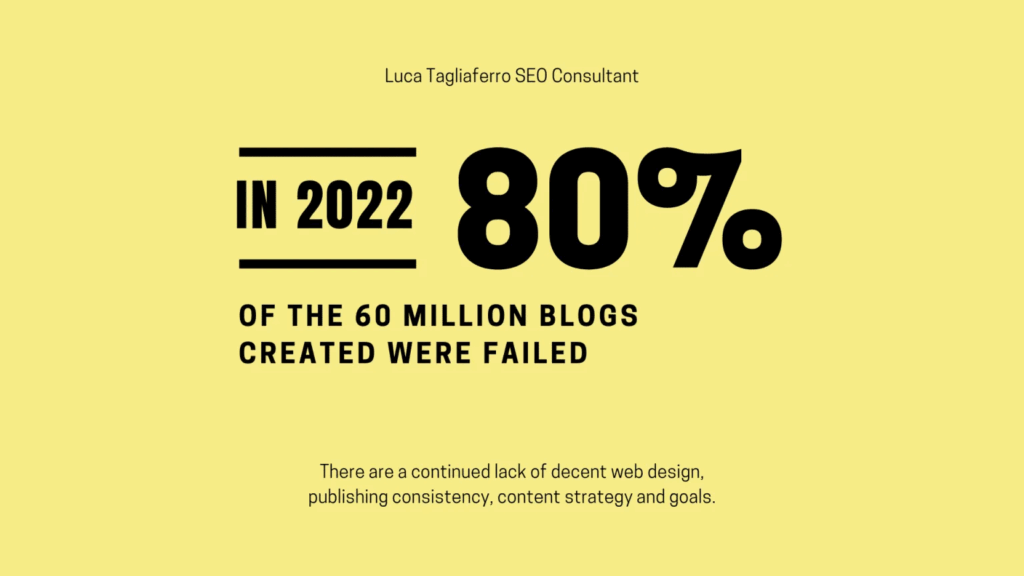
The top 3 biggest challenges that bloggers face include:
- Search traffic
- Reader engagement
- Traffic generation.

Traffic generation turns out to be the biggest challenge for most bloggers.
Generating traffic, in general, is a significant challenge for any online business. I mean, it’s not easy to drive traffic to your website or a landing page. You need to either spend money to drive traffic (paid traffic) or rely on traffic from search engines (organic), which isn’t that simple.
On top of that, there are more than 600 million blogs out there as of 2025. This means there’s a lot of competition. It’s not easy to stand out even if your business blog is highly focused.
So, what can you do about it, and how can you ensure your business blog doesn’t fail?
Let’s find out…
Reasons Why Business Blogs Fail
Let’s dig deep into the major reasons why 80% of business blogs fail. What mistakes these blogs make and how you can avoid those mistakes and become a successful blogger.
No or Poor Content Strategy
The most common reason leading to business blog failure is an improper content strategy.
A content strategy is a subset of marketing strategy that guides your business’s content creation and publication. It defines the end-to-end action plan for your blog and covers details like publishing schedule, blog objectives, editorial calendar, target keywords, budget, and much more.
It’s a critical document that every business blog should have.
In the absence of a strategy, you’ll have a blog, but it will never succeed because you can’t measure its performance and decide if it’s really working the way you wanted it to.
You won’t be able to understand how blog and content fits into your marketing strategy and what value they generate.
The only way to make sense of it is with a well-crafted, executable content strategy.
How to Avoid it
Develop a content strategy for your business blog.
If you have one already, refine and tweak it based on the steps discussed below.
Here’s how to create a content strategy:
- Set a clear, well-defined goal for your blog (e.g., X organic traffic generation in 6 months)
- Identify your target audience and the buyer personas you’ll target through content
- Do in-depth keyword research. Identify a list of keywords to target based on what keywords your ideal customers use (from buyer personas)
- Run a content audit if you already have a blog. Find what content to keep, what to remove, and what pieces to edit (based on keyword research data)
- Create an editorial calendar that lists what content to be created, when it goes live, who will create it, and other key information about content creation, editing, and the publication process
- Monitor the performance of your blog on a regular basis and tweak your strategy, editorial calendar, and keyword list based on performance.
Content strategy isn’t the same as marketing strategy or even content marketing strategy. That’s where it gets confusing and problematic.
It’s important to understand the differences to figure out why your blog needs a content strategy for success:

- Marketing strategy is your brand’s overall marketing strategy that oversees all types of marketing for your business.
- Content strategy guides content creation needs for your brand. It’s not just limited to blogging, rather, it covers all types of content that your business produces.
- Content marketing strategy is a subset of content strategy that mainly focuses on promoting published content to achieve marketing goals.
The success of your blog relies on content strategy and content marketing strategy. Make sure you have both for your business.
Low Quality Content
Your content strategy can’t stop your blog from failing if you produce low-quality content. Even the best content strategy will fail if the content is low quality.
It’s a common reason why most business blogs fail.
Since content quality is quite relative, it gets very hard for businesses as in the example below:

Most bloggers don’t know what high-quality, informative, and helpful content is (despite Google having clear instructions for it, see below).
A good chunk of business blogs end up publishing low quality content without even knowing it. For them, it’s the best content they are creating.
Search engines and users think otherwise.
Part of the problem is that creating content for search engines (which is low-quality content) is quite cost-effective. And creating content for humans requires a lot of research and resources.
But that’s not all. Low quality content can take any of the following forms:
- Poorly written content
- Targeting the wrong audience with the right piece
- Improper content formatting
- Keyword stuffing
- Unoriginal content
- Grammatical and spelling mistakes.
Low quality content, in any form, is lethal for business blogs.
How to Avoid it
Creating high quality content is the only option.
It’s, however, easier said than done.
And that’s due to two core reasons:
- Content quality is relative. A piece of content that’s helpful for one person might be useless for someone else. This makes it hard to evaluate content quality in-house.
- There’s no quantitative approach to converting low-quality content into high quality, helpful content. Even if you follow Google’s guidelines, it is still quite challenging to fully understand if your content really meets those demands.
Having said that, the best way to improve content quality and make it appealing for search engines and readers can be best done by sticking with the Google E-E-A-T framework. It’s used by Google to evaluate content.
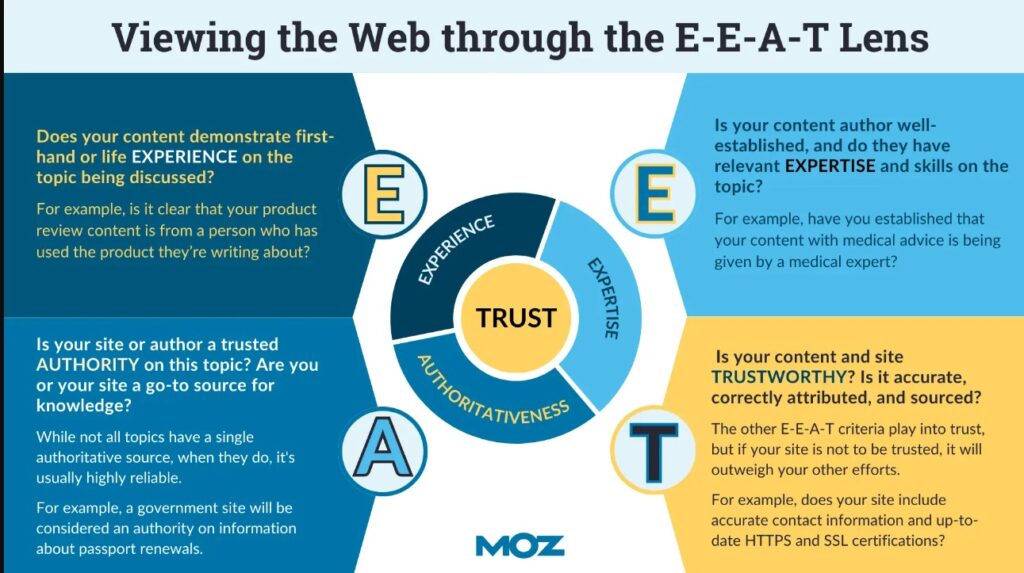
According to E-E-A-T framework:
- Your content should demonstrate experience
- The author must have the relevant skillset and expertise to craft content on a specific topic
- The website, blog, or author should be an authority in the subject or niche
- The content and website must be trustworthy.
If your content checks all these 4 distinct metrics, it’s considered helpful, high-quality content by Google. Eventually, your content ranks and your business blog grows.
Google has also listed a detailed questionnaire on how to assess the helpfulness and reliability of your content here. You’ll find questions that you must answer to figure out the quality of your content.
It’s the best you can do to improve the quality of your content.
Poor Optimization
Search engine optimization (SEO) is another factor that leads to business blog failures.
No matter how high quality your blog content is, if it’s not optimized for search engines – it won’t get crawled, indexed, and ranked.

Optimization helps web crawlers find and understand content.
Search engines power more than 90% of total web traffic and if you have a poorly optimized business blog, you’ll lose access to this 90% of traffic chunk.
But this doesn’t end here.
On-page and technical SEO handle optimization factors on your blog that are in your control. The other part of uncontrollable SEO factors (known as off-page SEO) plays an equally important role.
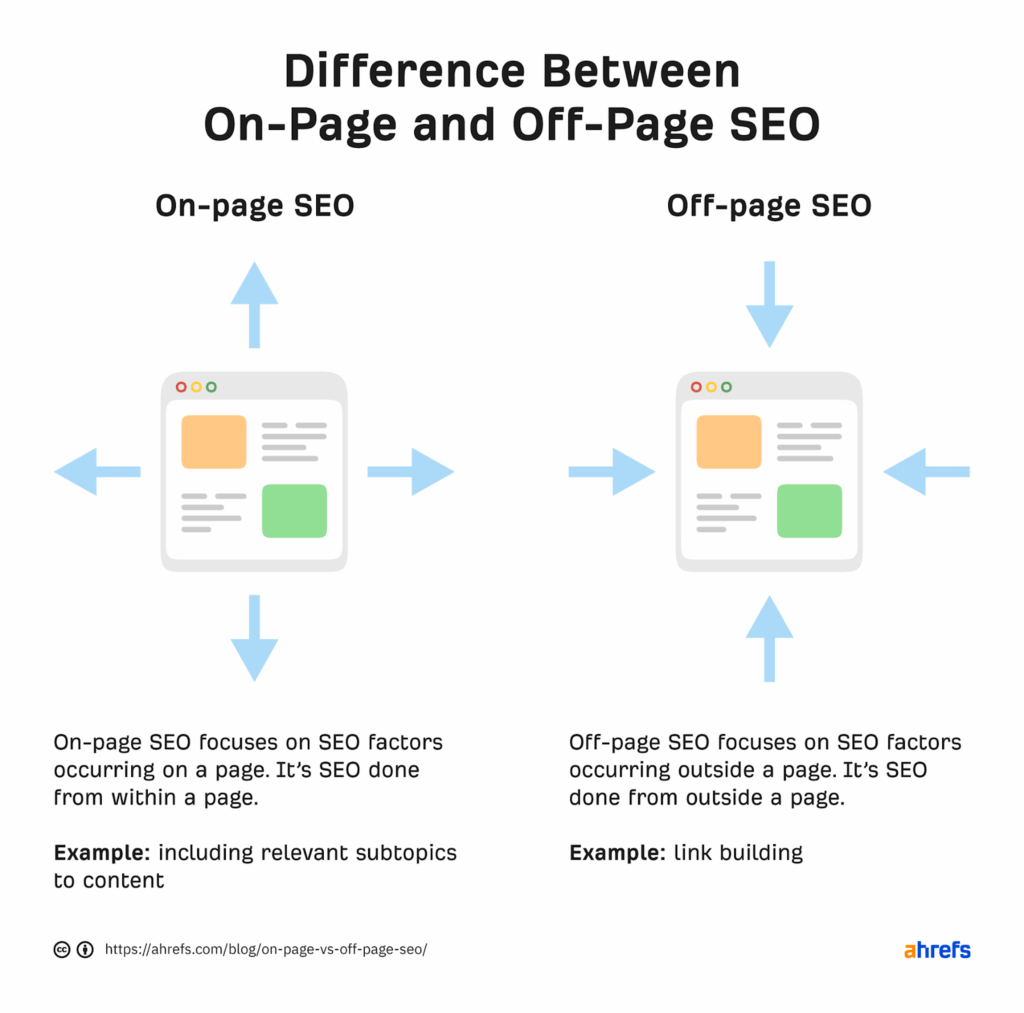
Read more about major Google ranking factors in this detailed guide to find out how these factors impact your business blog.
On-page SEO is easier and cost-effective, and therefore, most blogs are optimized fully for on-site.
Off-page SEO is the real challenge, which is mostly ignored because it’s time-consuming and costly. It has more impact on ranking and search visibility than on-page SEO and once you ignore it, your business blog fails.
Bloggers are under the impression that on-page SEO is all they have to do to rank in Google and other search engines. That’s not the case.
This illusion is a major reason why the majority of business blogs fail.
How to Avoid it
You need to invest in SEO. This includes both on-page and off-page SEO.
Let’s dive deep and see what needs to be covered for each SEO type to avoid failure.
On-Page SEO
On-page or on-site SEO refers to optimization practices for your blog. This mostly includes optimization of content and HTML. You can implement all of these optimization techniques at the website level. Some of them are technical, while most of them can be implemented easily.
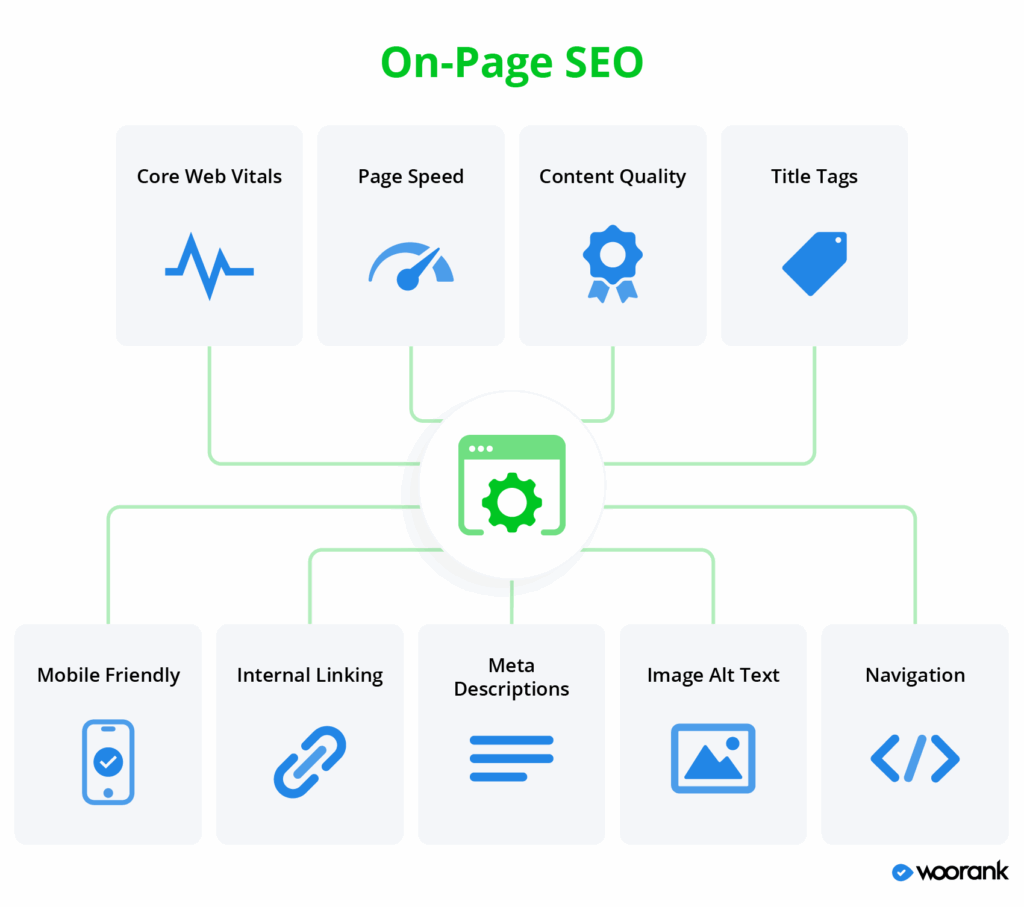
If you use a CMS like WordPress, you can use an on-page SEO plugin that’ll make it easy for you to optimize your blog and new content easily.
Here’s a list of optimizations you should consider for on-page SEO:
- Keyword research: Start with the keyword research process (as discussed above). Identify keywords for your blog, and each new post should target a specific keyword. This helps web crawlers understand what your article is about. Match keywords to search intent so you can address intent precisely.
- Format your blog post: The blog post shouldn’t be just text, rather, it should follow a proper structure with headings, subheadings, bullets, graphics and images, videos, outgoing links, internal links, and a proper introduction and conclusion. This helps both search engines and readers understand the purpose of blog posts.
- Add HTML tags: Web crawlers understand HTML tags and that’s why you need to use relevant tags to make content and webpage readable for crawlers. Common HTML tags include the alt tag, heading tags, the title tag, and the meta description.
- Core Web Vitals: These are the 3 variables by Google that measure user experience of your site. Core Web Vitals optimization is an essential requirement as it’s a Google ranking factor. You should improve page load speed, responsiveness, and visual stability. Read this guide for more details.
Off-Page SEO
This is the hard part.
Off-page or off-site SEO refers to optimization techniques implemented outside of your site and blog that impact your site’s ranking. These factors help you build authority and generate signals for search engines.
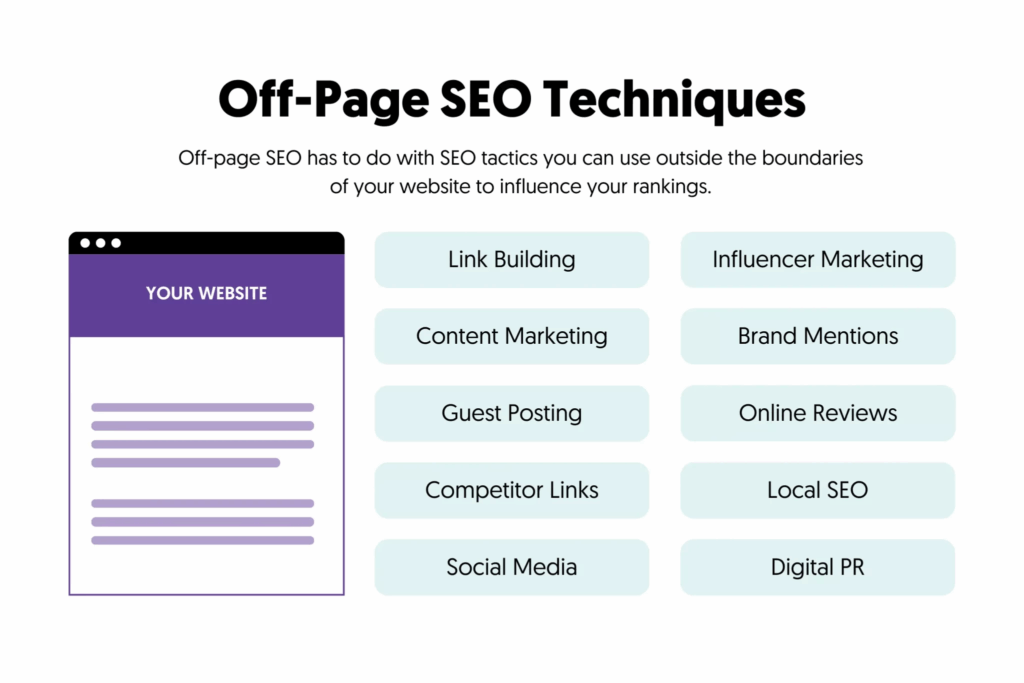
The number of backlinks has the highest weightage among all SEO factors. Backlinks from unique domains have the highest correlation with search rankings and thus they have the highest impact on search visibility.
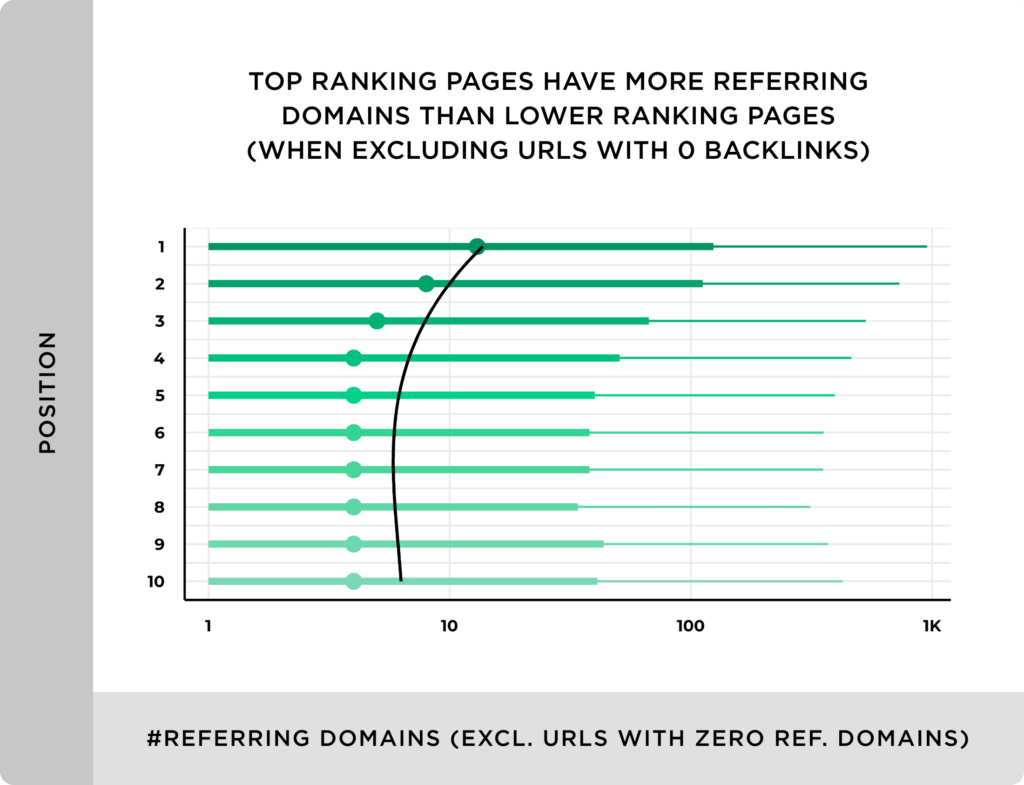
So, you need to focus on backlinks primarily to improve your blog’s search visibility.
Here’s an off-page SEO checklist to optimize your business blog for search engines:
- Acquire backlinks: This is the most important part of off-page SEO. You need to acquire backlinks naturally using methods like guest posting, competitor backlink analysis, outreach for backlinks, guestographic, resource page links, broken link building technique, unbranded mentions, and partner links. These techniques help you generate quality backlinks from relevant sites.
- Content distribution, repurposing, and syndication: You can distribute every blog post on different sites to reach a wider audience and you get backlinks in the process. Content repurposing lets you reformat a blog post and then publish it to a new medium, such as converting a blog post into a video. Content syndication is the process of republishing the same piece of content on another site with a link to your original blog post. These types of distributions are ideal for backlinks and reach.
- Local SEO: If you have a local business or you target a specific location, optimize for local SEO by creating a Google Business Profile. Optimize your profile on Maps and other linked services. List your business in directories to acquire citations.
Inconsistent Publishing
Search engines prefer two things: Freshness and topical authority.
Both of these originate from consistent content publication. Business blogs that don’t publish new content on their blogs regularly see a decline in organic traffic and rankings.
That’s because search engines don’t value blogs (irrespective of authority) that don’t publish new, fresh content for their audience.
Regularly publishing new content and updating existing content on your blog requires resources. This is where it gets challenging for business blogs.
Research shows that most bloggers publish either weekly or monthly, while 16% don’t have a regular schedule:

The ones who don’t publish regularly see a decline in rankings and traffic.
Irregular publishing frequency also impacts web crawlers and your audience.
It sends signals to search engines that you don’t publish new content too often or update existing content. Your crawl budget is reduced by search spiders and your blog loses a good chunk of traffic and rankings over time.
Why?
Because it isn’t the best source for information anymore.
The same applies to your audience. When readers see that your last post was published 2 months ago, it leaves a bad taste. It gives them the impression that it’s a dead blog.
This has a disastrous impact on a business blog’s health.
How to Avoid it
You need to publish new content regularly. This can be best done with an editorial calendar.
An editorial or content calendar lets you manage content publication for your business blog. It has all the information about blog titles, keywords, content creation and publication dates, blog post purpose, and more.
Here’s what an editorial calendar looks like:
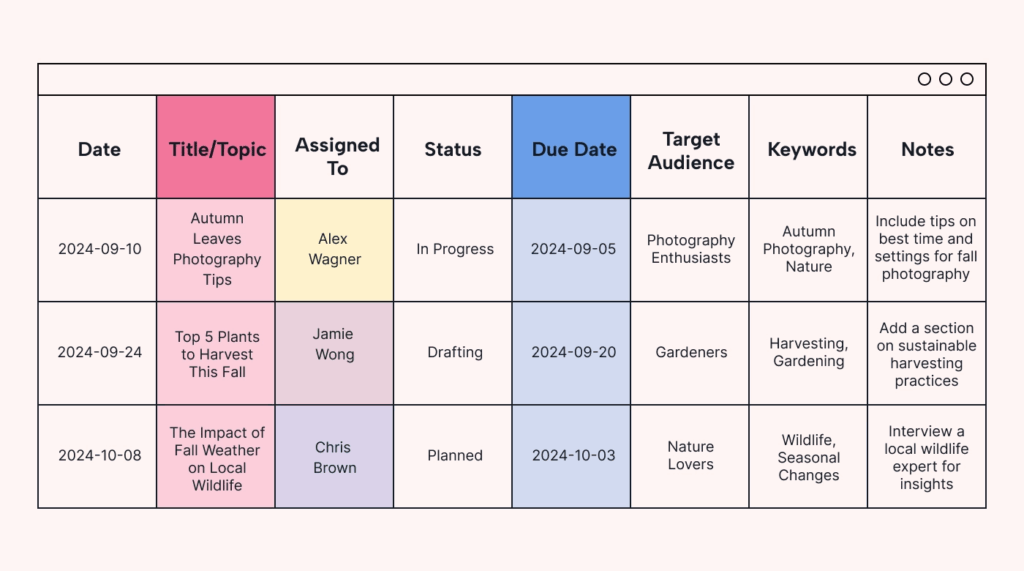
It’s best for managing blog posts and ensuring you publish content consistently. The editorial calendar itself doesn’t create content, rather, it supports regular content creation by providing you with a goal-based framework.
Research shows that when people are presented with specific and challenging goals, it boosts their performance significantly. An editorial calendar creates a sense of goal for your content creators and this leads to consistent publication:

But just having an editorial calendar isn’t enough. You need to fill it with relevant details that require keyword research and other work.
It’s more linked to your content strategy.
Follow these guidelines to ensure you publish consistently on your business blog:
- Have a dedicated team for blogging
- Create a detailed editorial calendar
- Use templates for articles that make it easy to write content
- Get inspiration and ideas from other bloggers
- Have a company-wide culture of publishing a fixed number of blog posts per week
- Assign blog posts to all the employees across departments to produce content regularly.
Lack of Marketing
Your blog needs marketing.
The problem with most businesses is that they rely on publishing content and never promote it. This technique doesn’t work. Blogging isn’t about content publication only, rather, content promotion is an essential factor that plays a key role in the success of a business blog.
According to Ahrefs, up to 90% of pages get zero traffic from Google.

Why?
No marketing.
The same study found that pages with more referring domains receive more organic traffic, and such pages rank for more keywords.
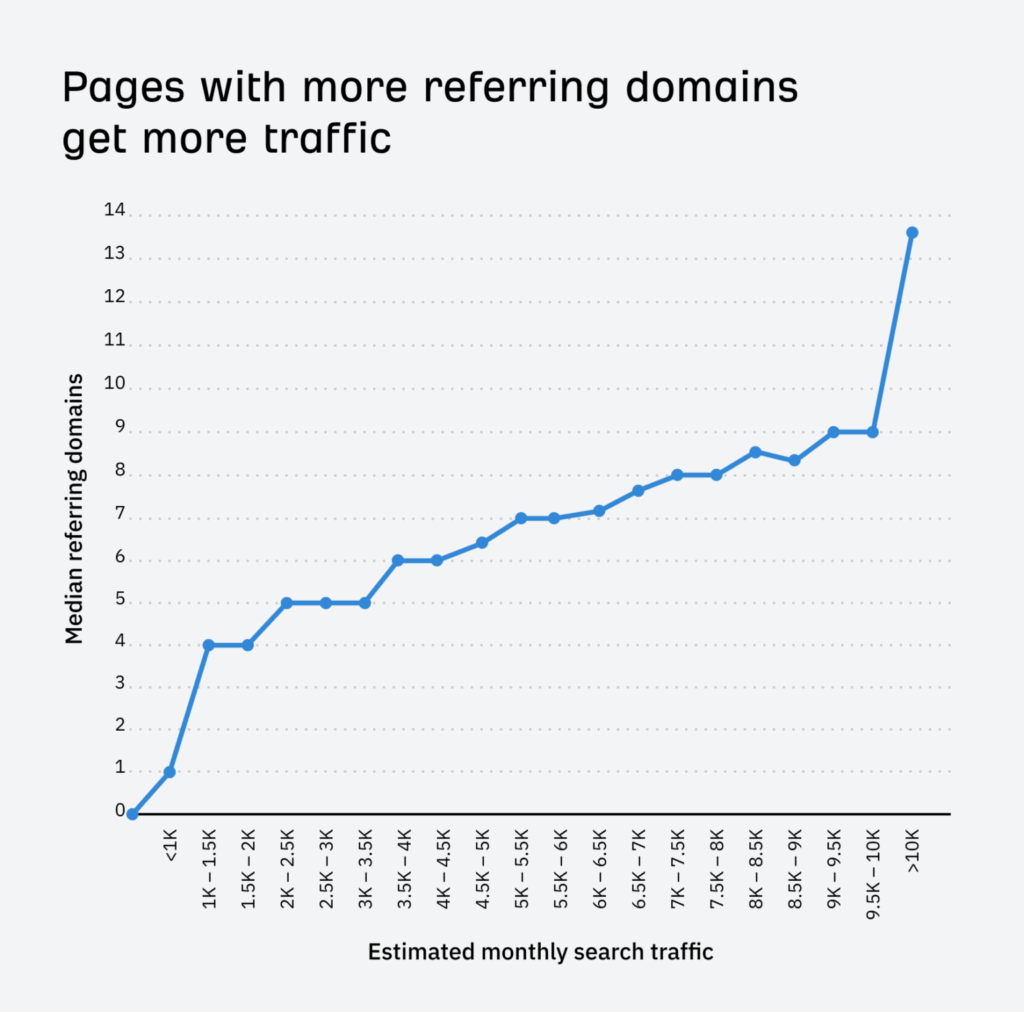
Backlinks (as discussed above) represent one form of content marketing. There are several other ways to ensure your content reaches the right people at the right time.
Any business blog that has a publish-and-forget philosophy will eventually fail.
How to Avoid it
Blog promotion is a must-have. There’s no shortcut to it.
You should promote every blog post you publish. Ideally, you should have blog post marketing techniques added to your editorial calendar.
This keeps things organized, and your marketing team can update the marketing updates in the editorial calendar.
The big question is: How to promote your blog?
The best, long-term, and sustainable way to promote your blog is to build authority, which is tied to backlinks. The more backlinks from high quality and relevant sites you have, the higher your domain authority.
High domain authority means better search visibility.

We already covered backlinks acquisition methods above.
You can promote your blog in other ways to drive referral traffic. It’s not just about backlinks all the time and not everyone uses search engines.
Here’s a list of the best ways to promote your business blog:
- Send new blog posts to your email list
- Share new content on social platforms
- Repurpose blog content and publish it on channels used by your primary target audience
- Create supporting videos for blog posts and publish them on video-based social platforms. Video content is the most liked content format
- Use Reddit and Quora to drive referral traffic to your blog.
Expecting Instant Result
Blogging is a long-term strategy. It doesn’t deliver results instantly.
Those who expect quick results end up abandoning their blogs, which leads to failure.
They fail to see results from a few blog posts and lose interest. In most cases, businesses shift blogging budget to other marketing campaigns after 1-2 quarters when they don’t see a substantial uplift in organic traffic or rankings.
However, blogging is a long-term game. You won’t see results in a few weeks or even months. It takes an average of 2 years for a blog to show results in terms of SEO and organic traffic:
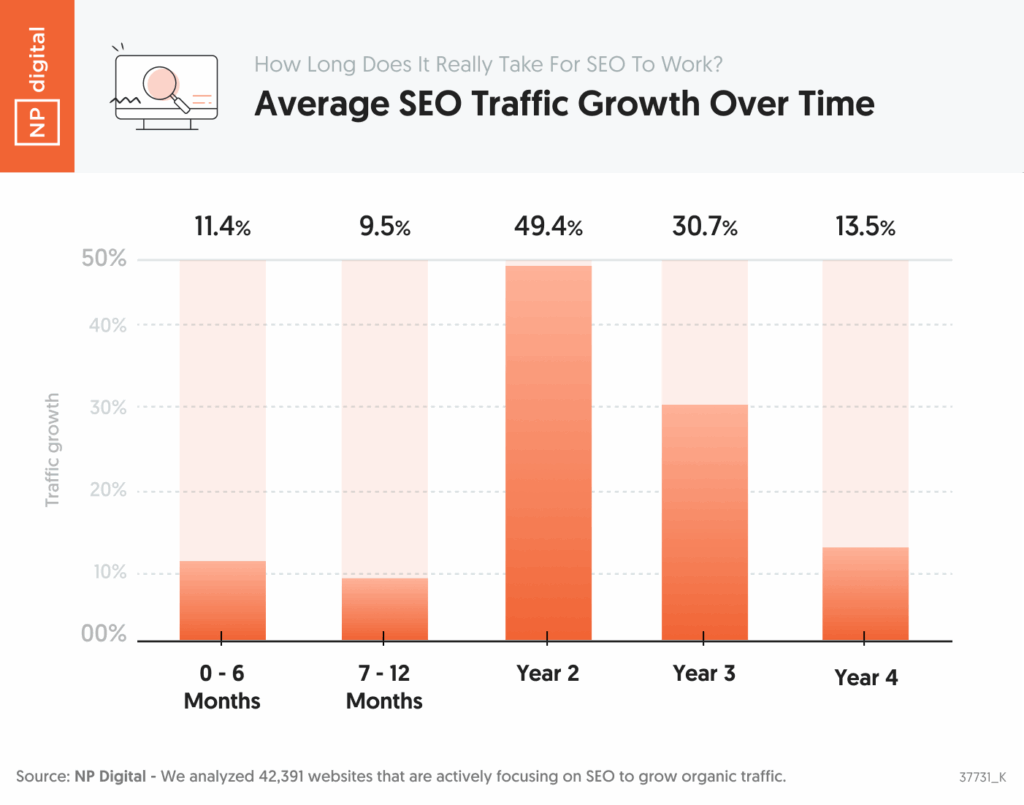
Your business blog isn’t a silver bullet. It shouldn’t be treated like one.
How to Avoid it
This issue can be addressed in multiple ways:
- Create a long-term content strategy with quarterly and yearly goals. Instead of setting a long-term objective, create monthly and quarterly goals for your blog. This will give you a sense of achievement when you see improvement in tiny steps.
- Don’t rely on the business blog for traffic, leads, and sales right away. Use it with other traffic sources like paid ads. Continue investing in your blog and don’t stop investing in other traffic sources. It gets problematic when you fully rely on a blog for traffic and it doesn’t deliver instantly.
- Have a clear understanding that blogging is a long-term strategy, not a quick fix. This requires a change of mindset at the organizational level.
- It’s best to wait for 1-3 years for a new blog to show results.
It’s not a bad idea to expect output from your blog, but you need to give it time.
Final Words
Blogging is one of the best sustainable ways to drive traffic to your site at a very low cost. If you are starting a business blog or already have one, make sure you are not making any of these common mistakes.
If you are making any of these mistakes, it’s time to fix them and revive your business blog.
Business blogs fail all the time. It’s common.
And it’s not a problem if your blog has failed or will fail.
As long as you don’t abandon your blog, learn from your mistakes, and rework your way up – it’s absolutely fine.
Featured Image: Pexels



